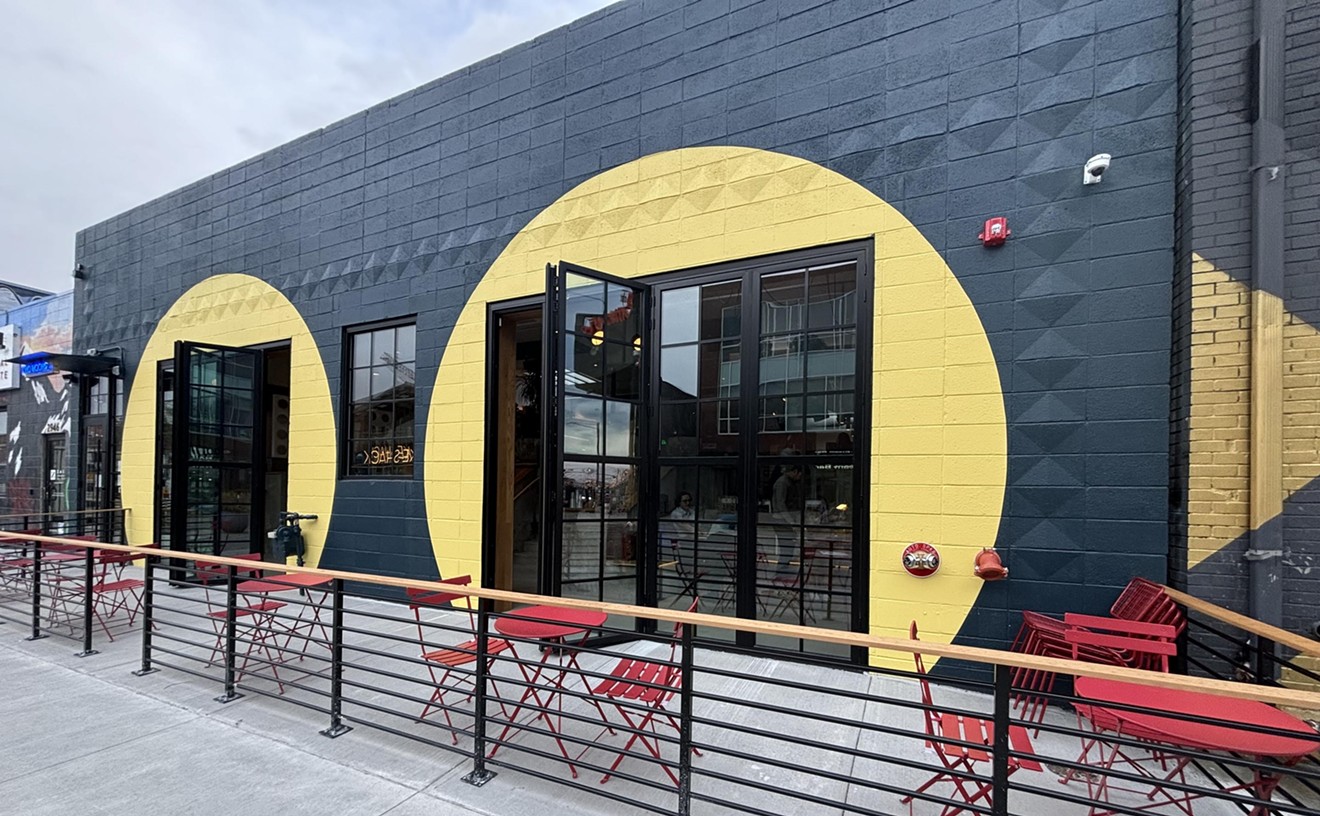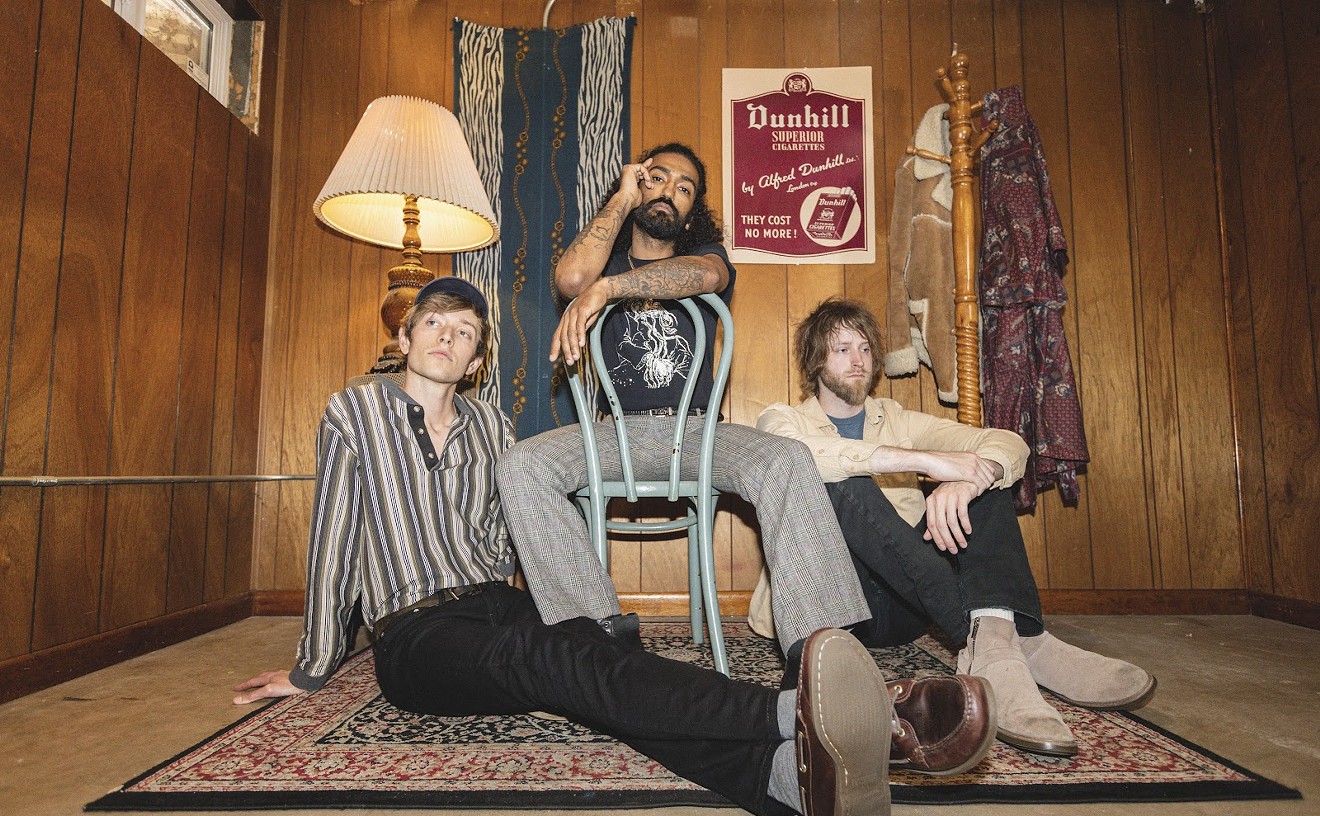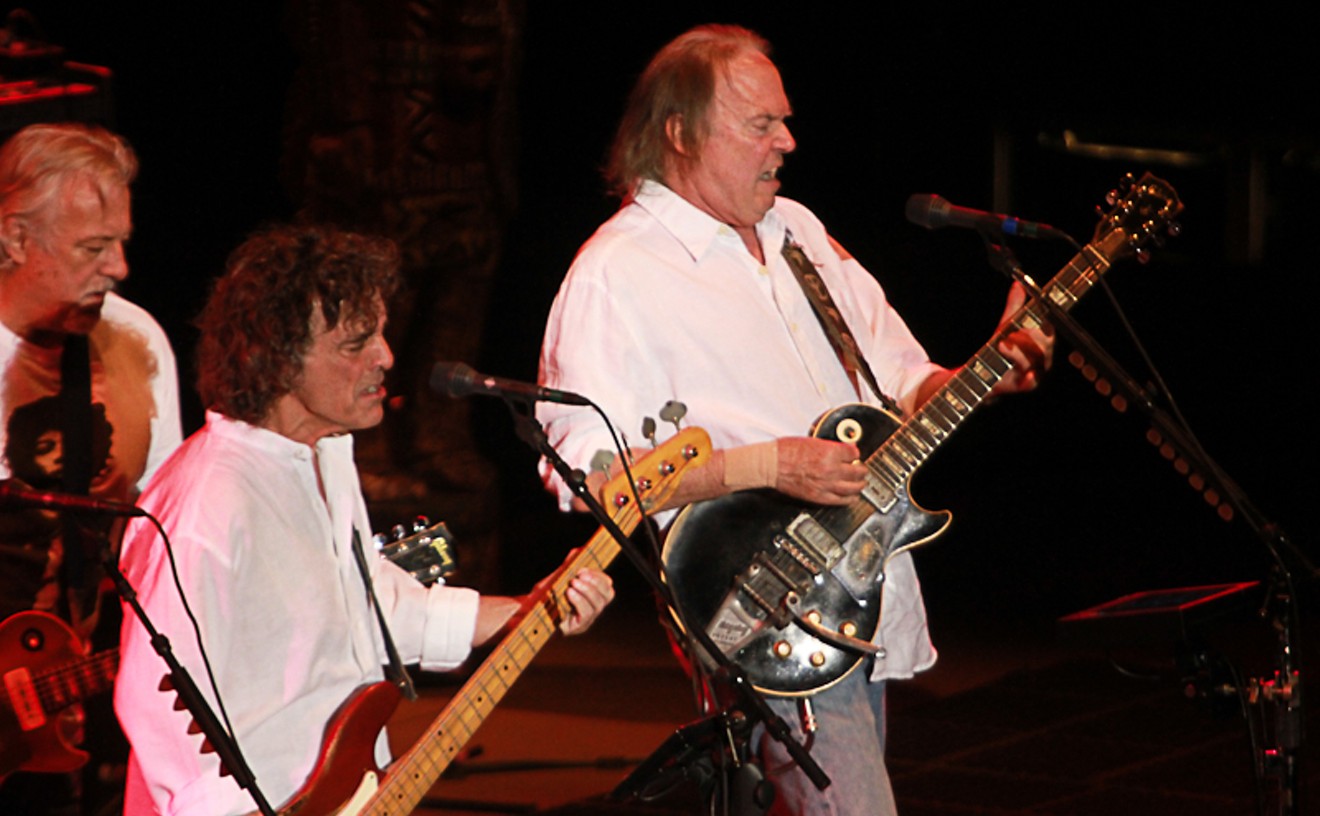At least that’s what you’ll hear if you hang around enough Denver music people. Though Denver’s musical reputation outside the state is as a hotbed for all things EDM and jam band, those genres don’t seem to influence what’s called the “Denver Sound.” Press a knowledgeable Denverite for further details, however, and descriptions remain murky. “Like Slim Cessna’s Auto Club or something,” they mumble, reshaping their ear plugs. In frustration, Westword even predicted in 2015 that “the concept of ‘The Denver Sound’ will finally be discredited, because there isn’t one.”
You might get the sense that whatever the Denver Sound was, it existed long ago, like in the ’90s, and far away — in a different city, unblighted by the influx of transplants and the brewpubs and yoga studios they wrought. It prompts the question of whether the Denver Sound, if it exists, is a pure sound at all, a style of music shared and developed by various bands, or if a sound must overtly reflect the landscape and concerns of the city in a particular moment of its history. Sure, Nathaniel Rateliff and the Night Sweats may be our most popular export right now, but no one is claiming that retro soul is the psychographic sound of Denver today.
Starting in the 1930s, the Five Points neighborhood was known as the “Harlem of the West,” fostering a thriving jazz scene that hosted some of the best players in the country, whether they lived here or were just passing through. In the ’50s and early ’60s, Denver was known as a Wild West outpost of the burgeoning national clean-cut folk scene, propped up by the residue of the Beats and residents like the Smothers Brothers and Walt Conley, and small clubs at which upstarts — like a delinquent Bob Dylan — tried their hand. However, in both of these instances, the music happening in Denver was reflective of the national pulse rather than representative of a strictly homegrown sound.
In the late ’60s, a shiny-haired goody-two-shoes hippie named Henry John Deutschendorf Jr. renamed himself after the capital of his favorite state, and in the early ’70s moved to Aspen. John Denver singing about the wonders of the Rocky Mountains no doubt introduced the landscape to a global audience and thus became representative of the place, accurate or not. (If you want to blame one dude for starting the westward migration, blame John Denver.) Whether his sunshiney acoustic-based soft rock was truly representative of Denver at the time, you can see other local artists of that era, like Katy Moffatt and Judy Collins, exploring similar sounds. Denver native “Judy Blue Eyes” Collins had hits with originals and updated folk takes on songs like “Someday Soon” that reflected her Western heritage and the popular easy-country rock of the time.
In the ’90s, Denver shifted from being a cowtown outpost for national scenes or the hub of odes to America’s natural beauty, and via the Apples in Stereo and the Elephant 6 collective, its music scene became a part of a developing indie-pop pipeline. The connections between the Mile High City and Athens, Georgia, led to Neutral Milk Hotel’s Jeff Mangum moving to Denver to prepare and record In the Aeroplane Over the Sea, and to local bands like Dressy Bessy reaching larger national audiences.
At the same time, a unique style was developing that came to dominate the local scene — a kind of Gothic Americana that is still most often referred to as the Denver Sound. Beginning perhaps in the late ’80s with the Denver Gentlemen, the sound was further popularized by bands like Slim Cessna’s Auto Club, 16 Horsepower (both of which feature former members of the Denver Gentlemen), Tarantella and Munly & the Lee Lewis Harlots — all of whom were associated with Boulder native Jello Biafra’s Alternative Tentacles record label. In a 2006 Denver Post poll, the Harlots were voted the best band in Colorado. That same year, former Post music critic Ricardo Baca wrote, “Whether it is called Gothic country, American Gothic or Gothic folk, the sound is dark, plainspoken and often morose. Sometimes it’s morbid, yet it’s also often uplifting — and always thoughtful.” Another common feature of these bands was the inclusion of odd or antiquated instruments, like a washboard or dulcimer. And while many of these bands have since called it quits, Slim Cessna’s Auto Club continues; the Club played the first Westword Music Showcase in 1995 and is still active. As Aaron “Loki” Johnson wrote for Colorado Public Radio in 2015, “Attending an Auto Club show is like finding yourself in a gospel-tent revival besieged by punks — expect speaking in tongues and a mosh pit.”
You can see elements of this Gothic Americana sound carried on by newer acts emerging from the region: Nederland-based Elephant Revival, for example, which recently played its first Red Rocks headlining show, incorporates a dark theatricality and unexpected instrumentation in its folk-inspired sound. Even the Lumineers, who moved from Brooklyn to Denver and developed their sound at the Meadowlark’s open-mic night, are poster children for a contemporary Americana sound, one that’s unafraid of richer production and the fun drama of pop.
Yet perhaps it’s DeVotchKa that best illustrates a Denver Sound — not because it’s often characterized as “Gothic mariachi gypsy folk,” but because the band keeps finding new modes of collaboration to stretch its musicians’ boundaries, including scoring the Denver production of Sweeney Todd and performing with the Colorado Symphony Orchestra for the last five years.
Here at Westword, we do a lot of categorizing and ranking in an attempt to wrap our heads and ears around the music scene and Denver itself. When it comes to figuring out which bands nominated for the Westword Music Awards fit into which genre or sonic category, we can admit that we don’t get it exactly right. That’s because what seems to most characterize Denver musicians is their genre-fluidity, their resistance to classification. In addition, the local music scene is characterized by an openness to experimentation that leads to collaboration, which is why Denver artists seem to have their hands in so many diverse projects at once. Perhaps there’s some sense of the frontier left in Denver that continues to draw creative people who want to push boundaries with other like-minded weirdos. Denver is a place that promises certain freedoms that you can’t find elsewhere, a place where residents seem to be constantly on the lookout for new, active experiences, and where subcultures — EDM and jam bands, for example — are embraced as utterly mainstream. It's also a city with a burgeoning yet unclassifiable hip-hop scene, as well as the home of Su Teatro's Chicano Music Festival and Hall of Fame, celebrating its twentieth year in 2016. At this year's Westword Music Showcase, some of the most anticipated elements will be unexpected collaborations: free-pop artist Joseph Lamar teaming up with visual artist Orchid z3ro at Dazzle, and Big J Beats throwing down with CRL CRRLL. In lieu of attempting to define a Denver Sound, the Showcase creates a space where music fans can experience the diversity and multiplicity of sounds in this ever-evolving town.
[
{
"name": "Air - MediumRectangle - Inline Content - Mobile Display Size",
"component": "12017618",
"insertPoint": "2",
"requiredCountToDisplay": "2"
},{
"name": "Editor Picks",
"component": "17242653",
"insertPoint": "4",
"requiredCountToDisplay": "1"
},{
"name": "Inline Links",
"component": "18838239",
"insertPoint": "8th",
"startingPoint": 8,
"requiredCountToDisplay": "7",
"maxInsertions": 25
},{
"name": "Air - MediumRectangle - Combo - Inline Content",
"component": "17261320",
"insertPoint": "8th",
"startingPoint": 8,
"requiredCountToDisplay": "7",
"maxInsertions": 25
},{
"name": "Inline Links",
"component": "18838239",
"insertPoint": "8th",
"startingPoint": 12,
"requiredCountToDisplay": "11",
"maxInsertions": 25
},{
"name": "Air - Leaderboard Tower - Combo - Inline Content",
"component": "17261321",
"insertPoint": "8th",
"startingPoint": 12,
"requiredCountToDisplay": "11",
"maxInsertions": 25
}
]










